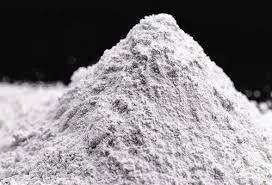
Aug . 16, 2024 23:55 Back to list
Exploring the Properties and Applications of Hydroxypropyl Methylcellulose in Various Industries
Understanding Hydroxypropyl Methylcellulose (HPMC)
Hydroxypropyl Methylcellulose (HPMC) is a semi-synthetic polymer derived from cellulose, which is one of the most abundant organic polymers in the world. HPMC is a versatile compound widely used in various industries due to its unique properties and functionalities. In this article, we will explore the composition, properties, applications, and benefits of HPMC.
Composition and Properties
HPMC is formed by modifying cellulose through a chemical process where hydroxypropyl and methyl groups are introduced to the cellulose structure. This modification enhances the solubility of cellulose in water and allows for a wide range of viscosities, depending on the degree of modification. HPMC is presented as a white to off-white powder that is odorless and tasteless.
One of the key properties of HPMC is its ability to form film and gel, which is crucial for many applications. Its solubility in both cold and hot water makes it a valuable additive in various formulations. HPMC also exhibits excellent rheological properties, which allow it to maintain a stable viscosity under changing conditions. This characteristic is especially important in applications such as adhesives, where consistent performance is required.
Applications
The versatility of HPMC leads to a multitude of applications across different industries
1. Pharmaceuticals HPMC is extensively used in the pharmaceutical industry as a binder, film-forming agent, and controlled-release agent for tablets and capsules. Its biocompatibility and non-toxicity make it suitable for drug formulations.
hydroxypropyl methyl cellulose hpmc

2. Food Industry In the food sector, HPMC serves as a thickener, stabilizer, and emulsifier. It is commonly found in dairy products, sauces, and baked goods, improving texture and shelf life.
3. Construction Beyond food and pharmaceuticals, HPMC is an essential ingredient in construction materials, particularly for tile adhesives and drywall compounds. Its water retention properties ensure better adhesion and workability, making it a valuable component in modern construction.
4. Cosmetics and Personal Care HPMC is utilized in the cosmetics and personal care industries as a thickening and gelling agent. It helps to improve the texture and application of creams and lotions, providing a desirable consistency.
5. Agriculture In agriculture, HPMC can be used in pesticide formulations and as a soil conditioner. Its ability to retain moisture can help enhance soil quality and support plant growth.
Benefits
The use of HPMC offers numerous advantages. Firstly, its non-toxic nature makes it safe for use in food and pharmaceuticals, aligning with regulatory standards. Secondly, it enhances product stability, improving consistency and performance across various applications. Additionally, HPMC is biodegradable and environmentally friendly, making it a sustainable choice for many industries.
Conclusion
Hydroxypropyl Methylcellulose (HPMC) is a remarkable compound with a diverse range of applications in pharmaceuticals, food, construction, cosmetics, and agriculture. Its unique properties, such as water solubility, excellent rheological behavior, and compatibility with various substances, solidify its importance in modern formulations. As industries strive for innovation and sustainability, HPMC stands out as a versatile and reliable component, contributing to improved product performance and consumer satisfaction. Understanding HPMC and its capabilities can offer insights into its significant role in shaping the future of various sectors.
-
Versatile Hpmc Uses in Different Industries
NewsJun.19,2025
-
Redispersible Powder's Role in Enhancing Durability of Construction Products
NewsJun.19,2025
-
Hydroxyethyl Cellulose Applications Driving Green Industrial Processes
NewsJun.19,2025
-
Exploring Different Redispersible Polymer Powder
NewsJun.19,2025
-
Choosing the Right Mortar Bonding Agent
NewsJun.19,2025
-
Applications and Significance of China Hpmc in Modern Industries
NewsJun.19,2025







